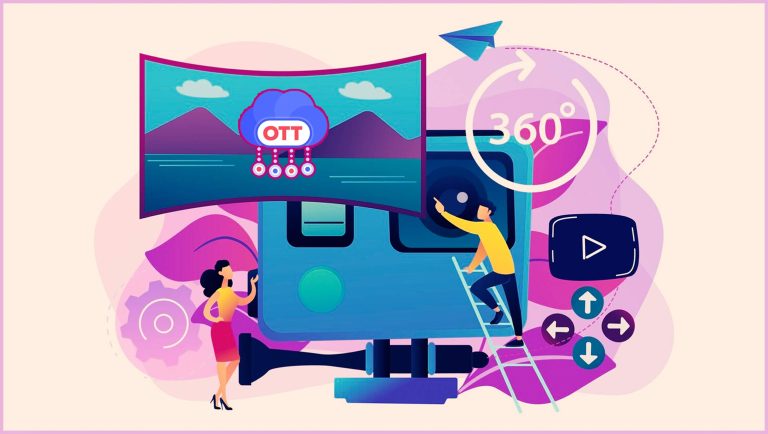The impending demise of third-party cookies on major browsers has some marketers rethinking the notion of marketing attribution itself. That’s a category error since attribution doesn’t depend on third-party cookies. Marketing attribution remains essential in a world where marketing teams are increasingly expected to optimize budgets, improve efficiency and drive sales growth.
If anything, marketers need to step up their focus on marketing attribution. That said, it’s important to be thoughtful about the solutions you fold into your marketing stack as there are many options, and all are not created equal — but more on that in a moment.
Marketing Technology News: Martech Interview with Faisal Galaria, CEO at Blippar
First, here are five reasons why marketing attribution remains essential:
1. Marketers need to understand the customer journey:
As a B2B marketer, you need qualitative information on how buyers learn about and acquire your product or service, and you need quantitative data about how they interact with your content and campaigns, online and off. Right now, marketers don’t have enough insights, with Gartner finding that only 14% of organizations believe they gave a 360-degree view of their customers. Attribution can go a long way in providing both qualitative and quantitative insights, giving an indispensable understanding into the customer journey.
2. Marketers need a systematic, unbiased way to prioritize campaigns:
In the old days, marketers relied on intuition to prioritize campaigns. Attribution takes the guesswork out of the process by demonstrating impact on pipeline and revenue in a systematic way that is free of personal bias. That way, you can determine campaign priorities based on data instead of feelings.
3. Marketers need a data-centric method to determine budget allocations:
Related to the point above, budget allocations in past days tended to be driven by intuition. Marketing attribution takes the guesswork out of budget allocation too, letting you know which campaigns generate the best returns so you can invest accordingly.
4. Marketers need a way to refine processes:
One unheralded benefit of marketing attribution is its potential as a tool to align marketing and sales and help teams identify and address process issues, such as dysfunctional handoff points. It’s also shown that better alignment directly impacts a company’s bottom line with 38% higher sales wins and 36% higher customer retention. Optimizing processes is half the story of great marketing operations, and attribution tools with funnel metrics can get you there.
5. Marketers need to coordinate with finance and sales teams:
Objective measurements and reports allow marketers to coordinate with colleagues in finance and sales to optimize cross-departmental activities. Each department plays a role in fulfilling overarching business objectives, and when they work together, they can drive toward goals more efficiently.
Virtually all successful marketing teams understand the need to demonstrate marketing’s impact on pipeline and revenue, and they use attribution tools in one form or another to gather that evidence. But the tools on the market vary widely in design effectiveness and the scope of activities covered.
Marketing Technology News: A Future Without Cookies: Understanding the Value of Omnichannel Marketing
It’s a good idea to go into any decision about marketing attribution tools with these points in mind:
1. Make sure the solution includes funnel metrics:
Funnel metrics tell you how leads are progressing through the funnel, giving essential volume, velocity and conversion rate data. Funnel metrics also enable marketers to continuously improve processes, which is one half of the efficiency equation (the other half being efficient budget allocation through attribution).
2. Insist on digital and non-digital campaign metrics:
The pandemic drove a huge spike in digital campaigns, and it’s critical to be able to measure results. But non-digital campaigns like tradeshows and events are starting back up. According to HubSpot, 78%of marketers plan to host at least one in-person event in 2022. It’s important to be able to measure results and attribute revenue for non-digital campaigns too — and to compare them to digital counterparts.
3. Look for a solution that maps out the customer journey:
The ability to visually track the buyers’ journey gives marketers a comprehensive look at touchpoints, from when an opportunity is created, to when the sale closes. This lets B2B marketers know which channels, vendors and programs influence revenue so they can adjust marketing spend as appropriate.
4. Find a solution that is built on the CRM:
When marketers rely on point solutions to generate data, the numbers don’t align with data in the company’s de facto system of revenue record: the CRM. This makes it difficult for marketing to align activities with sales and revenue teams. A native CRM solution facilitates alignment — and improves the credibility of marketing’s data.
Marketers need to demonstrate their contribution to pipeline and revenue, and marketing attribution is still the best way to showcase results and justify marketing budgets. But the right marketing attribution solution can help your team do much more than defend the spend — it can also help you operate more efficiently from both a campaign investment perspective and a process improvement point of view.
With a marketing attribution solution and models, you can create marketing mixes that drive leads through the funnel, making adjustments to improve performance on the fly. That’s why marketing attribution remains essential, and when you choose a solution with all the options you need, it will be easier to demonstrate why marketing remains essential too
























